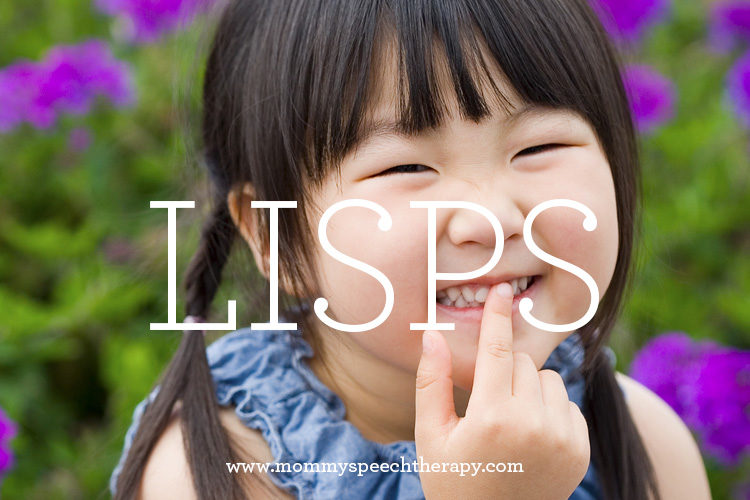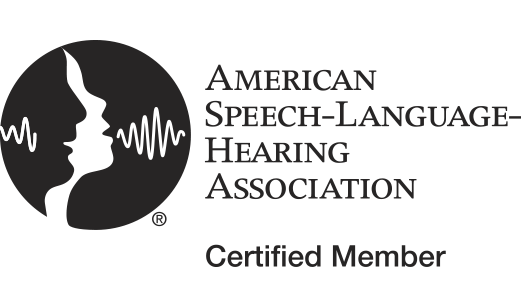My neighbor came to me about her 5 year old daughter wondering if she should be concerned about he daughter substituting her /s/ and /z/ sounds for TH sounds. I explained that this is known as an interdental lisp. Interdental lisps are often developmental disorders and usually resolve themselves by the age of 4 1/2. Anytime after 4 1/2 is a good time to seek the advice of a speech therapist. If the therapist feels your child is ready and would benefit from therapy, get started as soon as possible. The longer you wait the stronger the habit and the longer it will take to fix. Unfortunately, most school therapists are unable to treat lisps until the age of 7 or 8. Even worse, in some areas if the lisp does not affect the child’s education the speech therapists in the schools are not able to help the children at all. In these cases you may be on your own to find a private therapist for help.
What kind of lisp does my child have?
There are four kinds of lisps:
1. Interdental lisps
(when the tongue goes between your front teeth and makes the “th- sound for the /s/ and /z/ sounds).
2. Dentalized lisps
(when the tongue hits the teeth while making the /s/ and /z/ sounds).
3. Lateral lisp
(when air escapes out the sides of the tongue).
4. Palatal lisp
(when the tongue hits the soft palate while making the /s/ and /z/ sound.
Lateral and palatal lisps are not typical developmental errors and children who have these speech characteristics are less likely to “grow out of it”. If your child has a lateral or palatal lisp I would advise having your child evaluated by a speech therapist.
How do you train the correct production of /s/ and /z/ to a child with a lisp?
When training a child with an interdental lisp to say the /s/ and /z/ sounds I have followed what might be considered a traditional approach by simply teaching the child to keep his teeth closed when producing the /s/ and /z/ sound. After multiple successful repetitions of the /s/ with the teeth closed I introduce them to a list of 20 words ending with /s/ since the /s/ is generally mastered at the end of words first. After the child masters the list of 20 words I have them put those words into sentences and practice reading the sentences aloud. When the sentences are mastered I have the child read a story with multiple pictures or words ending with /s/. I continue to follow this outline as we practice /s/ and /z/ as it occurs in the initial and medial positions of words as well. Finally I have the client read aloud for 10-20 minutes working toward 80% accuracy or better. I conclude therapy once a client has mastered the correct production of /s/ and /z/ in all positions in conversation.
I often pair the articulation therapy for /s/ and /z/ with a straw drinking program to pull the tongue back since a forward tongue posture often contributes to interdental and dentalized lisps. Straw drinking also helps reinforce centralized airflow for clients with a lateral lisp. Some speech therapists don’t believe straw drinking is necessary but it has always been very successful technique for me and my clients.
When teaching the /s/ and /z/ sound to a child with a lateral lisp I have used a short straw placed at midline so the client could hear when the airflow was centralized. I have not found this approach to be very effective! It seems to take a long time for my clients to produce their first true /s/ sound. That is why I am so excited about the Butterfly Procedure by Dr. Caroline Bowen PhD, CPSP I read about on speech-language-therapy.com. With this approach, it just seems that teaching the /s/ to a client with a lateral lisp would be so much easier because they are able to visualize exactly what you want them to do with their tongue.

The gist of the “Butterfly Procedure” is that the tongue imitates the position of a butterfly, with the sides of the tongue up slightly like butterfly wings, and the groove of the tongue the body. The sides of the tongue touch the teeth lightly while the airflow goes down the groove of the tongue or body of the butterfly instead of out the sides as it does with a lateral lisp. You achieve this position by having the child say the “ee” as in key, or the “i” as in him. Then try for an /s/ holding the butterfly position. I have a couple of clients I am so excited to try this with!
The other new exciting tip I picked up from Dr. Caroline Bowen PhD, CPSP is to train the /s/ from the /t/ sound. She outlines 10 easy steps to teach this procedure. To give you a quick idea she begins by having the child say the /t/ sound, and then the /t/ sound repetitively, for example /t-t-t-t-t-t-t/. When you do this exercise quickly you can feel a slight /s/ coming out. Cool, huh! Check out the other steps, they just make sense.
Great sites to read over:
Here are a couple of sites that give good advice for parents in regards to lisps. All the best!
Lisping – Speech-Language-Therapy.com (Great Article!)
Can I help Correct My Child’s Lisp? – Baby Center.com






101 Comments